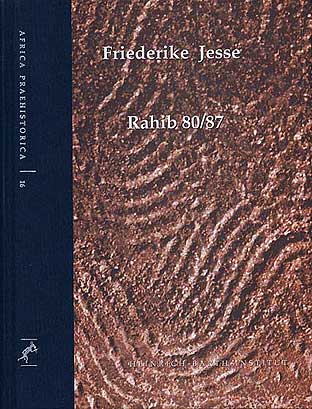
Africa Praehistorica 16, Köln 2003
Friederike Jesse:
RAHIB 80/87. EIN WAVY-LINE-FUNDPLATZ IM WADI HOWAR UND DIE FRÜHESTE
KERAMIK IN NORDAFRIKA
- 503 pp.
- 52 figures
- 1 colour photograph
- 79 tables
- 74 plates
- English, French and Arabic summeries
- hardcover, half linen-bound, size 21 x 28 cm
The "Wavy Line" phenomenon is not only one of the most interesting
aspects encountered in African cultural history but also within African
archaeology. Without any recognizable predecessors the first pottery finds
appear on the southern edge of the Sahara in the 9th millenium BC, displaying
a surprisingly homogenous picture over a distance of more than 5000 km:
a wavy line pattern made either by incision or impression covering the
entire surface of the globular vessels which also bears witness to an
extremely high standard of pottery technology.
The fact that this early pottery is very much older than comparible finds
from the Near East is not the sole reason for it being particularly worthy
of research. A further point of interest is that its appearance coincides
with fundamental landscape and cultural change. After a period of extremely
dry climatic conditions in the Late Pleistocene the southern Sahara was
subject to a monsoonal rain front coming from the South. The resulting
environmental conditions were to sustain cultural development in the region
for more than 5000 years, thus playing a decisive role in the history
of many parts of Africa.
The finds from two Cologne based projects, B.O.S. ("Besiedlungsgeschichte
der Ost-Sahara") and ACACIA ("Arid Climate, Adaptation and Cultural
Innovation in Africa") in the Wadi Howar, serve as the starting point
for Friederike Jesse's examination of the various facies of Wavy Line
decoration and her following discussion of its development and dispersal
over a large area.